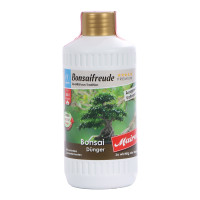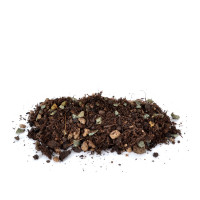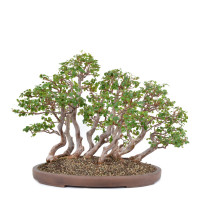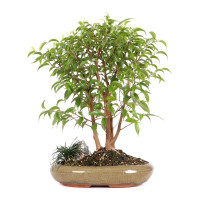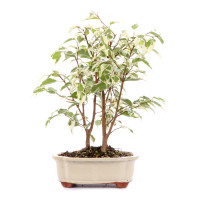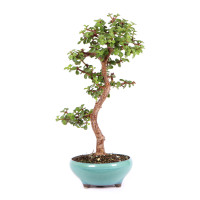- Order number: 1106-K-25-3309
- Height: 40 cm (incl. pot)
- Foliage: evergreen
- Bonsai Pot: ceramic pot
- Year: 2019
- Origin: Germany
Portulacaria afra - Dwarf Jade Tree
General:
The jade tree is native to South Africa. There it grows like a shrub or as a small tree up to 3 meters high. The shoots and leaves are thick and fleshy because, similar to cacti, they store water in their plant tissue.
Care as a bonsai:
Jade trees are popular bonsai because of their small leaves and compact growth. They also store a lot of water in their branches and leaves, which means that they need less watering than other indoor bonsai. They should even be kept rather dry, as a permanently wet substrate quickly leads to root rot and the death of the plant. Jade trees should be as bright as possible and can also be outside in summer. However, the plants are not frost-hardy and should therefore be overwintered frost-free. In winter, however, the jade tree can also be kept warm. The growth is quite abundant in well-cared for plants and you can shorten shoots that are too long or remove excess shoots during the entire growth period. After pruning, jade trees can always be repotted without any problems.
Note:
Salt deposits can occur on all Crassula and Portulacaria species, which appear as white spots on the leaves. Fertiliser salts and lime are excreted by the plant through stomata in the leaves. This is typical of many succulent plants and increases with calcareous water. The deposits are not harmful. If necessary, however, they can be wiped off or rinsed off.











